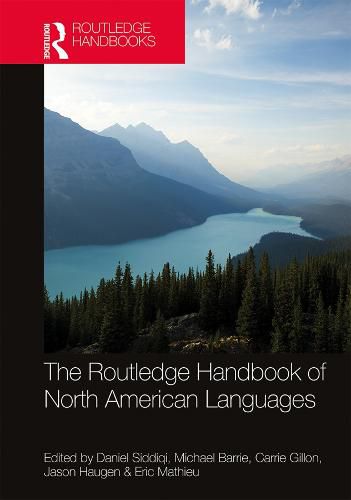Readings Newsletter
Become a Readings Member to make your shopping experience even easier.
Sign in or sign up for free!
You’re not far away from qualifying for FREE standard shipping within Australia
You’ve qualified for FREE standard shipping within Australia
The cart is loading…






The Routledge Handbook of North American Languages is a one-stop reference for linguists on those topics that come up the most frequently in the study of the languages of North America (including Mexico). This handbook compiles a list of contributors from across many different theories and at different stages of their careers, all of whom are well-known experts in North American languages. The volume comprises two distinct parts: the first surveys some of the phenomena most frequently discussed in the study of North American languages, and the second surveys some of the most frequently discussed language families of North America. The consistent goal of each contribution is to couch the content of the chapter in contemporary theory so that the information is maximally relevant and accessible for a wide range of audiences, including graduate students and young new scholars, and even senior scholars who are looking for a crash course in the topics. Empirically driven chapters provide fundamental knowledge needed to participate in contemporary theoretical discussions of these languages, making this handbook an indispensable resource for linguistics scholars.
$9.00 standard shipping within Australia
FREE standard shipping within Australia for orders over $100.00
Express & International shipping calculated at checkout
The Routledge Handbook of North American Languages is a one-stop reference for linguists on those topics that come up the most frequently in the study of the languages of North America (including Mexico). This handbook compiles a list of contributors from across many different theories and at different stages of their careers, all of whom are well-known experts in North American languages. The volume comprises two distinct parts: the first surveys some of the phenomena most frequently discussed in the study of North American languages, and the second surveys some of the most frequently discussed language families of North America. The consistent goal of each contribution is to couch the content of the chapter in contemporary theory so that the information is maximally relevant and accessible for a wide range of audiences, including graduate students and young new scholars, and even senior scholars who are looking for a crash course in the topics. Empirically driven chapters provide fundamental knowledge needed to participate in contemporary theoretical discussions of these languages, making this handbook an indispensable resource for linguistics scholars.